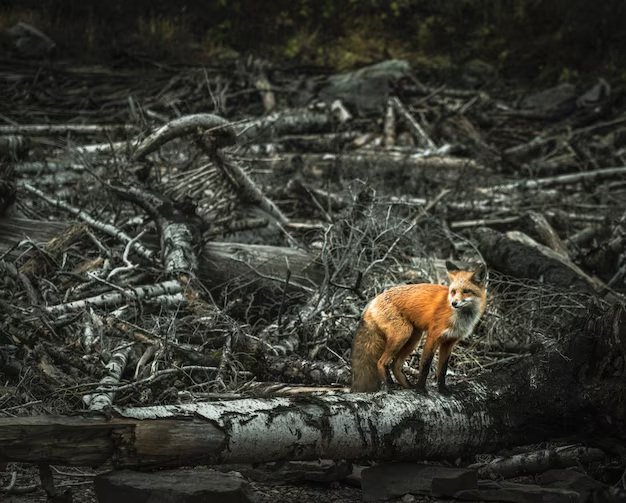10 Animal Migration Examples
In 1834, Charles Darwin observed unusually large hummingbirds along Chile’s coast, noting their sudden appearance and disappearance. Nearly two centuries later, after equipping these birds with tiny tracking devices, researchers discovered that southern giant hummingbirds embark on a 5,200-mile round-trip migration from sea level in Chile to elevations over 13,000 feet in the Peruvian Andes. During this journey, they pause to acclimate to the thin air, much like human mountaineers. This extensive migration led to a remarkable finding: the giant hummingbird is actually two distinct species—the migratory southern giant hummingbird and the resident northern giant hummingbird, each with unique genetic adaptations. This discovery not only highlights the incredible endurance of these birds but also showcases the importance of migration in driving evolutionary diversity.
Animal migrations, such as this, are driven by survival instincts, environmental cues, and, increasingly, human-induced changes. From the Arctic tern’s pole-to-pole flights to the memory-guided treks of mule deer, these movements are vital for ecological balance. However, challenges like climate change, habitat fragmentation, and human activities threaten these natural phenomena. Understanding and safeguarding these migrations is essential, not only for the species involved but also for the health of global ecosystems.

In This Article
- 1. Arctic Tern – The Longest Migration on Earth
- 2. Bar-tailed Godwit – Nonstop Transoceanic Flight
- 3. Humpback Whales – Shifting Calving Grounds
- 4. Mule Deer – Memory-Driven Migrations
- 5. Sea Turtles – Navigating by Earth’s Magnetic Field
- 6. Common Noctule Bats – Surfing Weather Fronts
- 7. Beluga Whales – River Explorers
- 8. Monarch Butterflies – A Multi-Generational Odyssey
- 9. Sardine Run – The Ocean’s Silver River
- 10. White-Eared Kob – Africa’s Hidden Giant Migration
- Migration at a Glance: Comparative Table
- Conclusion: Why Migration Matters — And What You Can Do
1. Arctic Tern – The Longest Migration on Earth
The Arctic tern is a small seabird that holds the record for the longest migration of any animal on Earth. Each year, these birds journey from their breeding grounds in the Arctic to their wintering areas near Antarctica and back again, covering an average round-trip distance of about 70,900 kilometres (approximately 44,000 miles).
What’s truly astonishing is that over a lifespan of more than 30 years, an Arctic tern may travel a cumulative distance exceeding 2.4 million kilometres (about 1.5 million miles), which is equivalent to three round trips to the Moon.
Their migration isn’t a straight line; instead, Arctic terns take advantage of prevailing wind patterns, following a meandering route that allows them to glide efficiently over vast ocean expanses. This energy-efficient strategy enables them to maintain their incredible long-distance travels annually.
The motivation behind this journey is the pursuit of continuous daylight and abundant food sources. By migrating between the Arctic and Antarctic regions, Arctic terns experience two summers each year, maximising their exposure to sunlight and feeding opportunities.
Despite the challenges posed by climate change, recent studies suggest that Arctic terns may possess the resilience to adapt to shifting environmental conditions.

2. Bar-tailed Godwit – Nonstop Transoceanic Flight
Imagine flying from Alaska to Tasmania—over 13,560 kilometres—without stopping once to eat, drink, or rest. That’s exactly what a young bar-tailed godwit, known only by its satellite tag number 234684, accomplished in October 2022. At just five months old, this bird completed an 11-day, nonstop journey across the Pacific Ocean, setting a new world record for the longest continuous flight by any bird.
Bar-tailed godwits undergo remarkable physiological changes to prepare for such an epic voyage. They nearly double their body weight by accumulating fat reserves, which can make up more than 50% of their body mass. This fat serves as the sole fuel for their journey. Additionally, they shrink their digestive organs, like the stomach and intestines, to reduce weight and make room for the extra fat. Simultaneously, their heart and flight muscles enlarge to support the demands of continuous flapping.
Unlike seabirds, godwits cannot rest on the water; their legs lack webbing, making it impossible to take off from the ocean surface. This means any miscalculation or exhaustion mid-flight could be fatal.

3. Humpback Whales – Shifting Calving Grounds
Humpback whales travel up to 8,000 kilometres from the icy waters of Antarctica to the warmer seas near Australia to give birth and raise their young. Traditionally, these gentle giants were believed to calve in tropical regions like the Great Barrier Reef. However, recent observations have challenged this understanding.
In July 2023, marine biologist Jane McPhee-Frew spotted a newborn humpback calf near Newcastle, a bustling port city in eastern Australia. This unexpected sighting prompted further investigation, revealing over 200 instances of newborn calves as far south as Tasmania and New Zealand’s South Island. These findings suggest that humpback whales are now giving birth well outside their previously recognised tropical calving grounds.
Several factors may contribute to this shift. Climate change has led to a rise in sea surface temperatures, making southern waters more hospitable for calving. Additionally, the recovery of humpback whale populations since the end of industrial whaling may be encouraging a broader distribution of birthing sites.
This change in calving locations raises concerns for the safety of mother whales and their calves. Southern regions, including areas near Tasmania, are subject to increased human activity, such as shipping and fishing, which pose risks of ship strikes and entanglement. Recognising and protecting these new calving areas is crucial for the conservation of humpback whales.

4. Mule Deer – Memory-Driven Migrations
Mule deer in Wyoming undertake one of North America’s most impressive migrations, travelling approximately 150 miles from the Red Desert to the Hoback Basin. This journey, the longest documented mule deer migration in the lower 48 states, is not guided by instinct alone but by memory. Studies from the University of Wyoming reveal that these deer rely heavily on learned routes, passed down from mother to fawn, rather than solely on environmental cues like vegetation changes or snow depth.
However, this remarkable migration faces significant threats. Human activities, particularly gas drilling, have disrupted these established paths. Research indicates that such disturbances lead to decreased fat reserves, fewer offspring, and higher mortality rates among mule deer. The construction of roads, fences, and other infrastructure fragments habitats, making it challenging for deer to navigate their traditional routes. Additionally, noise and increased human presence in these areas further stress the animals, impacting their overall health and migration success.
Efforts are underway to mitigate these impacts. According to a report, the Bureau of Land Management has proposed designating certain areas along the migration corridor as Areas of Critical Environmental Concern to protect these vital routes. Conservationists emphasise the importance of preserving these migratory paths, not only for the mule deer but also for the broader ecosystem that depends on their movement. Protecting these corridors ensures the survival of a species that has adapted over generations to navigate Wyoming’s challenging landscapes.

5. Sea Turtles – Navigating by Earth’s Magnetic Field
Sea turtles, such as green and loggerhead species, undertake extensive migrations between nesting and feeding sites. They possess an innate ability to navigate using Earth’s magnetic field, allowing them to return to the exact beach where they were born to lay their eggs. This precise navigation is crucial for their survival and reproduction.
Recent studies have provided empirical evidence supporting this remarkable navigational skill. Researchers at the University of North Carolina at Chapel Hill demonstrated that loggerhead sea turtles can learn and remember the unique magnetic signatures of different geographic regions. This discovery offers new insights into how turtles and other migratory animals navigate vast distances to reach specific foraging and breeding grounds.
The ability to detect and distinguish among the magnetic fields in different locations enables sea turtles to compile a “magnetic map” for navigating to specific feeding and nesting areas. This magnetic map sense is distinct from the magnetic compass sense, and both are thought to be inherited. Hatchling sea turtles swim in directions that would keep them on course when exposed to the magnetic field signatures of various locations along their species’ migratory routes.
Understanding these navigational mechanisms is vital for conservation efforts. Protecting the specific magnetic environments of nesting beaches is essential, as disruptions could interfere with the turtles’ ability to return home.

6. Common Noctule Bats – Surfing Weather Fronts
The common noctule bat (Nyctalus noctula), one of Europe’s largest bat species, undertakes impressive migratory journeys each spring. According to a study, these bats can travel up to 1,116 kilometres, with some covering 383 kilometres in a single night.
Recent research by the Max Planck Institute of Animal Behaviour has unveiled how these bats achieve such feats. By equipping 71 female noctules with ultra-lightweight sensors, scientists discovered that the bats time their migrations to coincide with warm weather fronts that precede storms. These fronts provide favourable tailwinds, allowing the bats to “surf” the air currents and conserve energy during their long flights.
This strategy is particularly beneficial for pregnant females, who migrate to northern regions to give birth. By harnessing storm fronts, they reduce the physical strain of migration, ensuring better survival prospects for themselves and their offspring.
However, this reliance on specific weather patterns makes them vulnerable to environmental changes. Understanding their migratory behaviour is crucial, especially as human activities, like wind turbine installations, pose threats along their routes.

7. Beluga Whales – River Explorers
Beluga whales, often called the “canaries of the sea” for their vocal nature, are remarkable for their extensive migrations. Each year, they travel up to approximately 5,000 kilometres, moving from the icy Arctic Ocean to warmer estuaries and rivers during the summer months. These migrations are not just for feeding but also for socialising and nurturing their young in safer, predator-free environments.
One extraordinary instance of their adaptability was recorded on June 9, 2006, when canoeists discovered a young beluga whale carcass in Alaska’s Tanana River, approximately 1,700 kilometres inland from the nearest ocean habitat. Scientists believe the whale may have followed migrating salmon upstream, showcasing the species’ incredible navigational abilities and adaptability to diverse environments.
Belugas are highly social creatures, often travelling in pods and communicating through a complex array of sounds. Their migrations are influenced by environmental cues such as sea ice conditions and prey availability. However, increasing human activities like shipping and industrial development pose significant threats to their migratory routes, emphasising the need for conservation efforts to protect these unique marine mammals and their habitats.

8. Monarch Butterflies – A Multi-Generational Odyssey
Monarch butterflies undertake a multi-generational migration stretching up to 9,000 kilometres from Canada to the oyamel fir forests of central Mexico. What makes this feat even more remarkable is that no single butterfly completes the entire round trip. Instead, it takes up to four generations to complete the cycle.
In spring, monarchs begin their northward journey from Mexico. Along the way, they breed and lay eggs, with each subsequent generation continuing the migration. By late summer, the fourth generation—often referred to as the “super generation”—emerges. Unlike their predecessors, these butterflies live up to eight times longer and possess the endurance to fly the entire distance back to Mexico.
Despite never having been to their overwintering sites, these butterflies instinctively navigate to the same forests their ancestors occupied. Researchers believe they use environmental cues like the sun’s position and Earth’s magnetic field to guide them
However, this incredible migration faces significant threats. Climate change, habitat loss, and pesticide use have led to a dramatic decline in monarch populations. In recent years, the number of monarchs at their wintering sites in Mexico has plummeted, raising concerns about the future of this species.
Conservation efforts are underway to protect the monarchs’ habitats and ensure the survival of their migration. By planting milkweed—the sole food source for monarch caterpillars—and preserving critical resting sites, we can help sustain this natural wonder for generations to come.
For more information on monarch butterfly migration and conservation efforts, visit the Monarch Joint Venture.

9. Sardine Run – The Ocean’s Silver River
The sardine run along South Africa’s east coast is one of the most spectacular marine migrations. Billions of sardines move northward in massive shoals, attracting a plethora of predators, including dolphins, sharks, and seabirds. This migration is not only a feeding frenzy for predators but also a significant event for local fisheries and tourism.
The sardine run typically occurs from May through July, when billions of sardines spawn in the cool waters of the Agulhas Bank and move northward along the east coast of South Africa. Their sheer numbers create a feeding frenzy along the coastline. The run, containing millions of individual sardines, occurs when a current of cold water heads north from the Agulhas Bank up to Mozambique.
The Sardine Run significantly boosts the local economy. Coastal communities, particularly in the Eastern Cape and KwaZulu-Natal provinces, experience increased economic activity as tourists flock to witness the event. In 2018, tourism related to the Sardine Run contributed approximately R120 million (about $7.5 million USD) to these regions’ economies. This influx supports various local businesses, from accommodations and restaurants to tour operators and artisans.
However, the Sardine Run faces challenges. Climate change has led to warmer ocean temperatures, causing delays and unpredictability in the migration. Research indicates that the run is occurring later each year, likely due to these temperature shifts and increased cyclone activity. Such changes not only disrupt the ecological balance but also threaten the livelihoods dependent on this annual event.
Efforts are underway to ensure the sustainability of the Sardine Run. South Africa has established Marine Protected Areas (MPAs) to safeguard marine biodiversity. These measures aim to preserve the delicate balance of this marine spectacle, ensuring that future generations can continue to marvel at the ocean’s silver river.

10. White-Eared Kob – Africa’s Hidden Giant Migration
The Great Nile Migration takes place each year in South Sudan, where millions of white-eared kob—graceful antelope with distinctive white ears—journey across the vast Boma-Badingilo Jonglei Landscape (BBJL), forming the largest land mammal migration on Earth. A 2024 aerial survey revealed that approximately six million antelopes, including over five million white-eared kob, traverse this region, surpassing even the famed Serengeti migration in scale.
The migration spans across South Sudan into Ethiopia’s Gambella National Park, covering diverse habitats from floodplains to savannas. While exact distances vary, some white-eared kob have been tracked migrating over 825 kilometres round-trip. This epic journey is driven by seasonal changes, guiding the herds to areas with fresh grazing and water.
Despite decades of civil unrest and environmental challenges, this migration endures, showcasing the resilience of nature. However, threats like poaching and habitat loss loom large. Conservation efforts, led by organisations like African Parks in partnership with the South Sudanese government, are crucial. Initiatives include aerial surveys, community engagement, and anti-poaching measures to protect this ecological marvel.
Migration at a Glance: Comparative Table
| Species | Max Distance (km) | Unique Feature | Threats/Challenges |
|---|---|---|---|
| Arctic Tern | ~70,900 annually | Longest migration | Climate change |
| Bar-tailed Godwit | ~13,560 non-stop | Longest non-stop flight | Habitat loss |
| Humpback Whale | Up to 8,000 | Shifting calving grounds | Climate change, ship strikes |
| Mule Deer | ~240 | Memory-driven routes | Habitat fragmentation |
| Sea Turtle | Up to 10,000 | Geomagnetic navigation | Light pollution, fishing nets |
| Common Noctule Bat | Up to 1,116 | Surfing weather fronts | Habitat loss |
| Beluga Whale | Up to 5,000 | Riverine migrations | Climate change |
| Monarch Butterfly | Up to 9,000 | Multi-generational migration | Habitat loss, climate change |
| Sardine | ~1,500 | Massive shoals | Overfishing, climate variability |
| White-Eared Kob | Unknown | Massive land migration | Poaching, habitat encroachment |
Conclusion: Why Migration Matters — And What You Can Do
Migration connects ecosystems, balances food webs, and reminds us of nature’s interwoven paths. Yet, these epic journeys are increasingly under threat.
Actionable Advice:
- Be a Responsible Tourist: Support eco-certifications and ethical wildlife viewing.
- Support Habitat Protection: Donate to organisations safeguarding migratory corridors.
- Advocate for Policy Change: Migration needs international cooperation — your voice matters.
- Educate & Share: Inspire others by sharing migration stories on social media or in schools.







